ALLOPLEX: Hydnum
Extending Transmodal Worldmaking beyond Russell's Circumplex Model of Affect
A research exploration of the relationship between a nonlinear modular system and transmodal environments.
© transLAB, MAT, University of California, Santa Barbara / SBCAST 2022
research team: Iason Paterakis, Nefeli Manoudaki, Diarmid Flatley, Pau Roselló Diaz, Alan Macy
Supervisors: Marcos Novak
“Hydnum” is an extended reality data-driven interactive installation that immerses the visitor in a transmodal continuum of scent, music, form, poetry, space, and light. This data-driven piece is based on research connecting virtual and physical elements to emotional affect and cross-sensory stimulus through human biodata. Hydnum extends James Russell's "Circumplex Model of Affect and Motivational State" into transmodal worldmaking in extended reality.
Motivation:
The motivation for exploring this field lies in the investigation of cross-sensory relationships between different mediums. A wide range of virtual and physical spaces could potentially benefit from these kinds of explorations, considering the impact of olfactory stimuli on human experience and the perception of a place. This research explores the relationship between Extender Reality and Biodata.
Hydnum is a transmodal / symbiotic system consisting of a prototype medical scent delivery system, a cyber-physical artifact, an extended Reality experience, and a generative audio component. The biodata visualizations also extend into the surrounding area by using projection mapping. The interactive spatial system can transmit scents based on the user's real-time psychophysiological measures (heart rate and heart rate variability data).
A modular system of tubes, 3D printed outputs, and brackets emerge from the six scent modules of the BIOPAC modular scent delivery system and expand into the surrounding space, introducing a prominent tree-shaped structure. Our approach adopts the characteristics of a nonlinear network, usually referred to as "Rhizome" after the Ancient Greek word "ῥίζωμα", "rhízōma".
Hydnum is the result of the ongoing collaboration between the transLAB, BIOPAC systems, and SBCAST (Santa Barbara Center for Art, Science, and Technology). Hydnum is part of the <Alloplex: BioAffective Worlds XR Extending Transmodal Worldmaking beyond Russel's Circumplex Model of Affect> research initiative.
The installation has been presented twice during the End of the Year Show of the Media Arts and Technology Program, of the University of California, Santa Barbara.
The first event took place in Elings Hall on Dec 27, 2022, and the second event was held at the Santa Barbara Center of Arts and Technology (SBCAST) on June 2nd, 2022.
PUBLICATIONS:
- Manoudaki N, Paterakis I, Flatley D, Novak M. Alloplex BioAffective Worlds XR: Hydnum. In: Proceedings of SIGGRADI 2024; 2024; Barcelona, Spain. p. 2671–2682.
PRESENTATIONS:
-ACM SIGGRAPH- Digital Arts Community, SPARKS “New Media Architecture(s): A Speculative Vision of Change in the Arts, Design, & Sciences” / December 2022
-ERASMUS+ XR Multiplier Event - ONASSIS FOUNDATION Symposium / Invited keynote speech / November 2022
-AI TRACE Conference, (Synaesthetic Engagement of Artificial Intelligence with Digital Arts and its Audience) / December 2022
EXHIBITIONS:
-UCSB, Media Arts and Technology program- End of the Year Show @ Santa Barbara Center for Art, Science, and Technology (SBCAST), California, Santa Barbara / June 2022
-UCSB, Media Arts and Technology program- End of the Year Show @ California NanoSystems Institute (CNSI) Elings Hall, MAT Program, University of California, Santa Barbara, California, Santa Barbara / May 2022
Fabrication Process and Challenges:
The middle structure consists of six scent delivery modules and other components of the prototype scent delivery system [3]. Our intention was to fabricate modular paradigms that can augment the plain function of each module by promoting the emergence of a larger spatial interactive sculpture with the ability to transmit scents based on the user's prerecorded emotions. The collection of the fabricated structures has been utilized to support an expansive system of tubes, strings, and brackets, which emerge from the six scent modules and expand in the surrounding space to introduce a prominent tree-shaped structure.
Rhino/ Grasshopper_
Rhino has been used to design mounting brackets that would hold the tubes into place. 2 different iterations have been designed, printed, and tested during the construction of the modular tubing solution. One model has been designed with 3D printing in mind and another was specifically measured for 5mm acrylic sheets. The second one was more rigid due to the properties of acrylic and reduced fabrication times since it has been laser cut. The first one however has been 3D printed using Ultimaker Cura's Special Modes. Spiralizing the Outer Contour and Smoothing the Spiralized Contour allowed for reduced print times and greater flexibility. The brackets could easily bend without losing their rigidity
Screenshot of the Grasshopper script for the modular connectors.
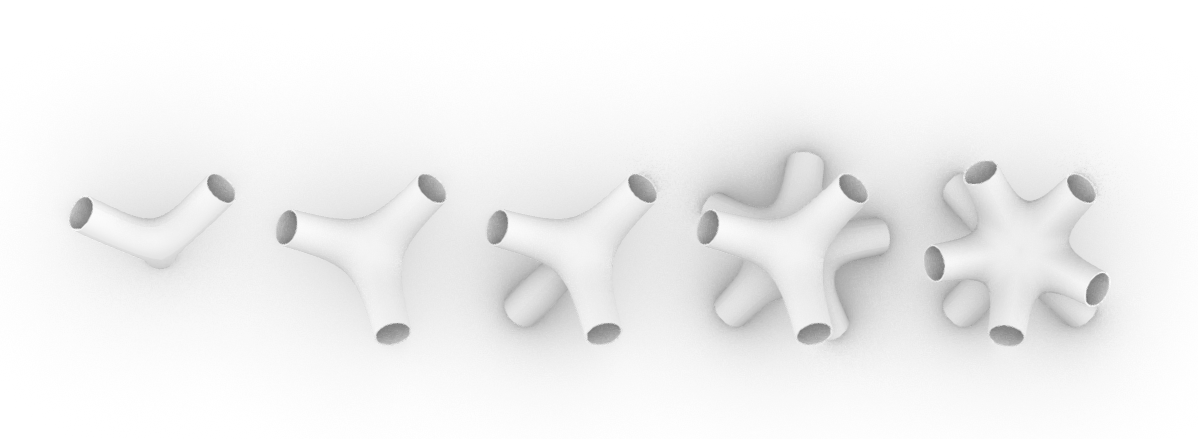

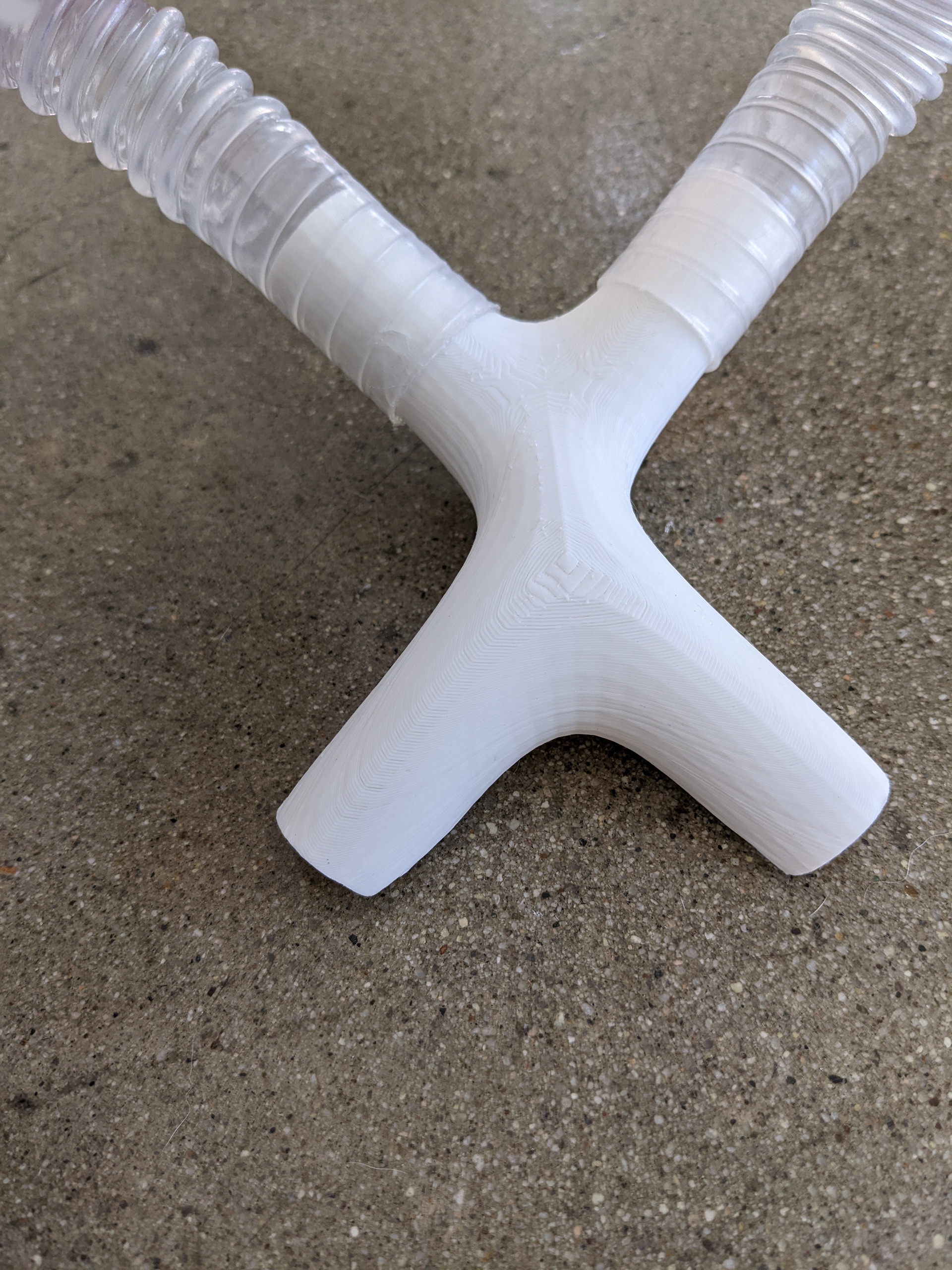
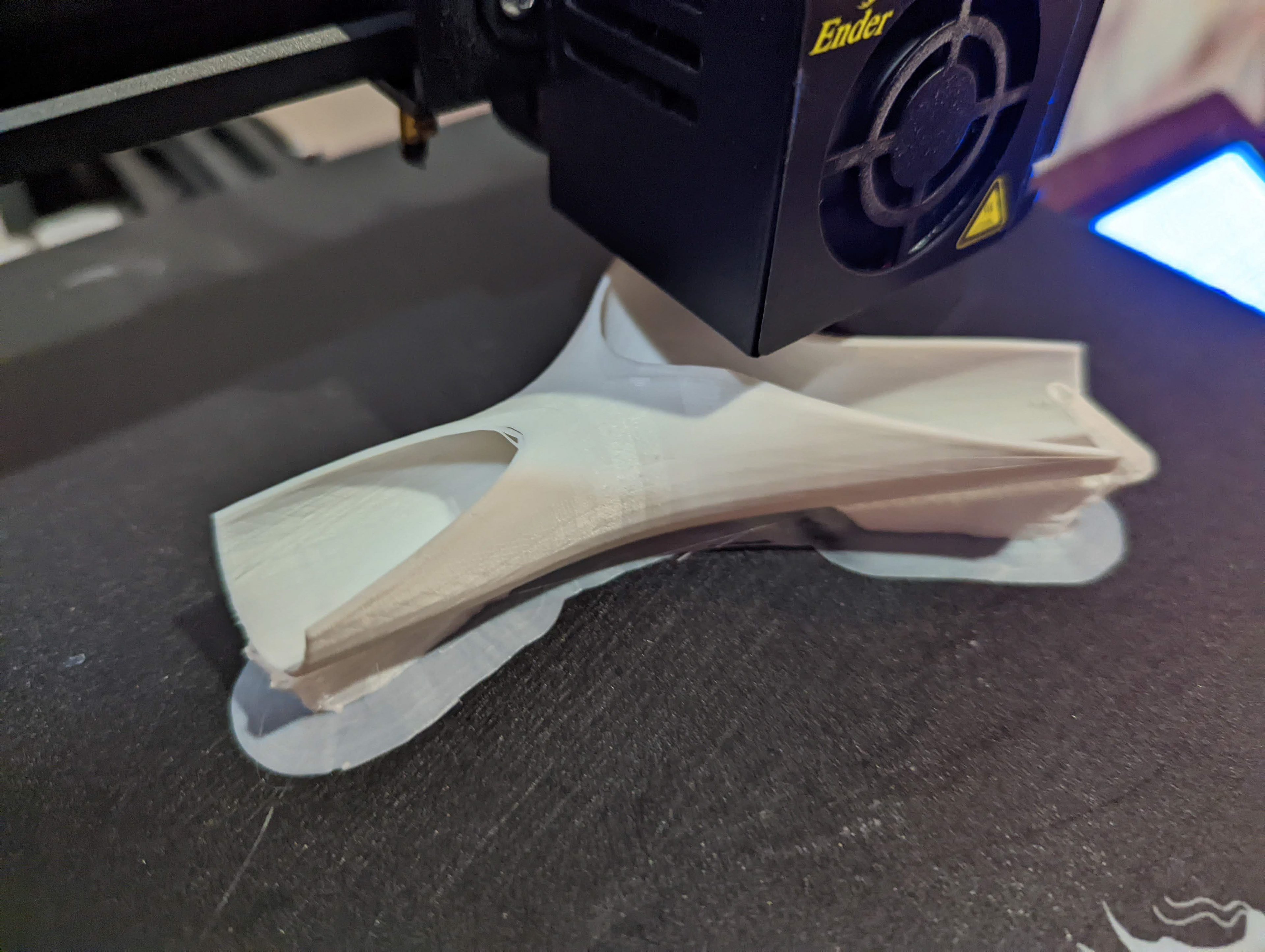
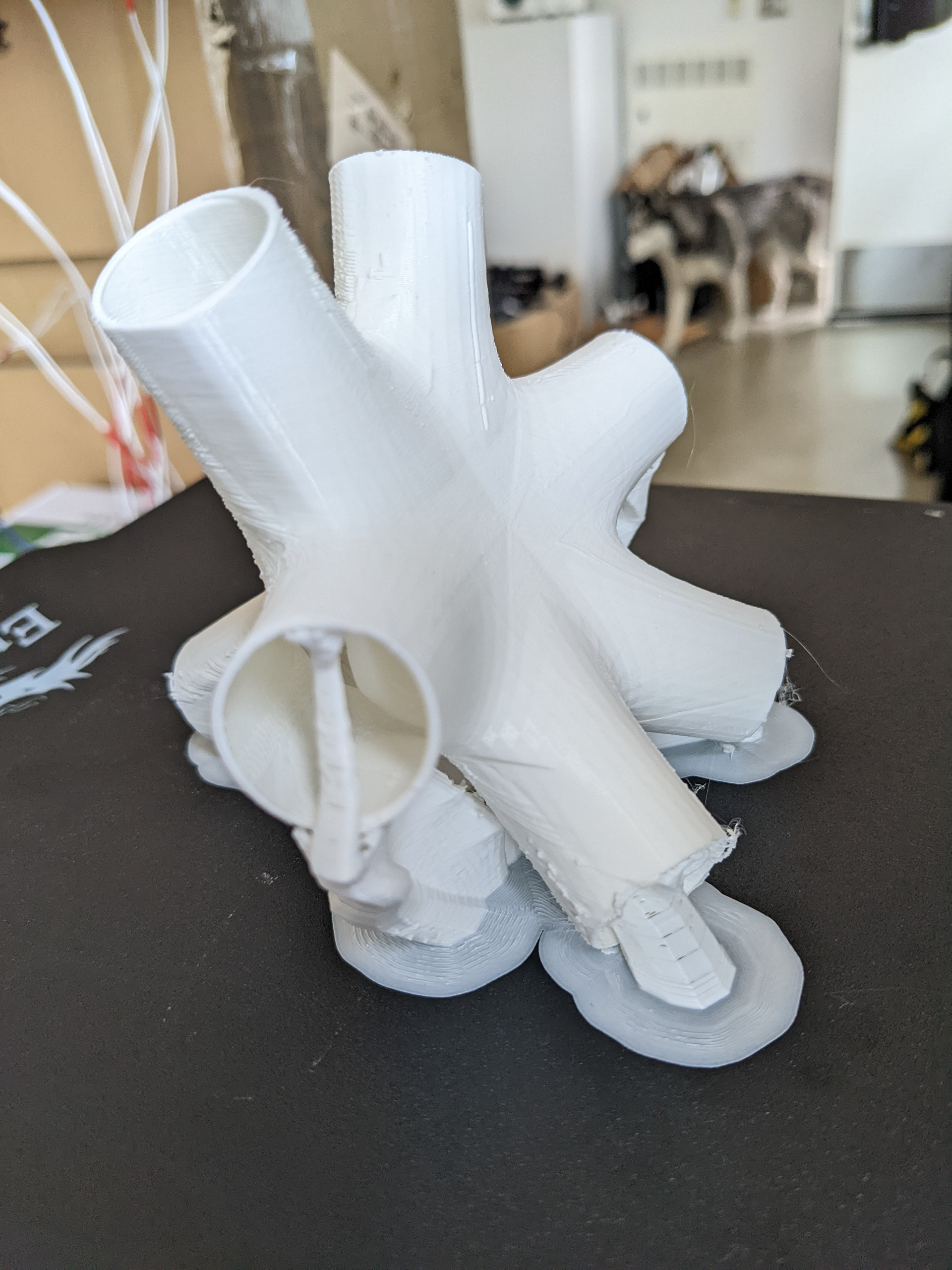
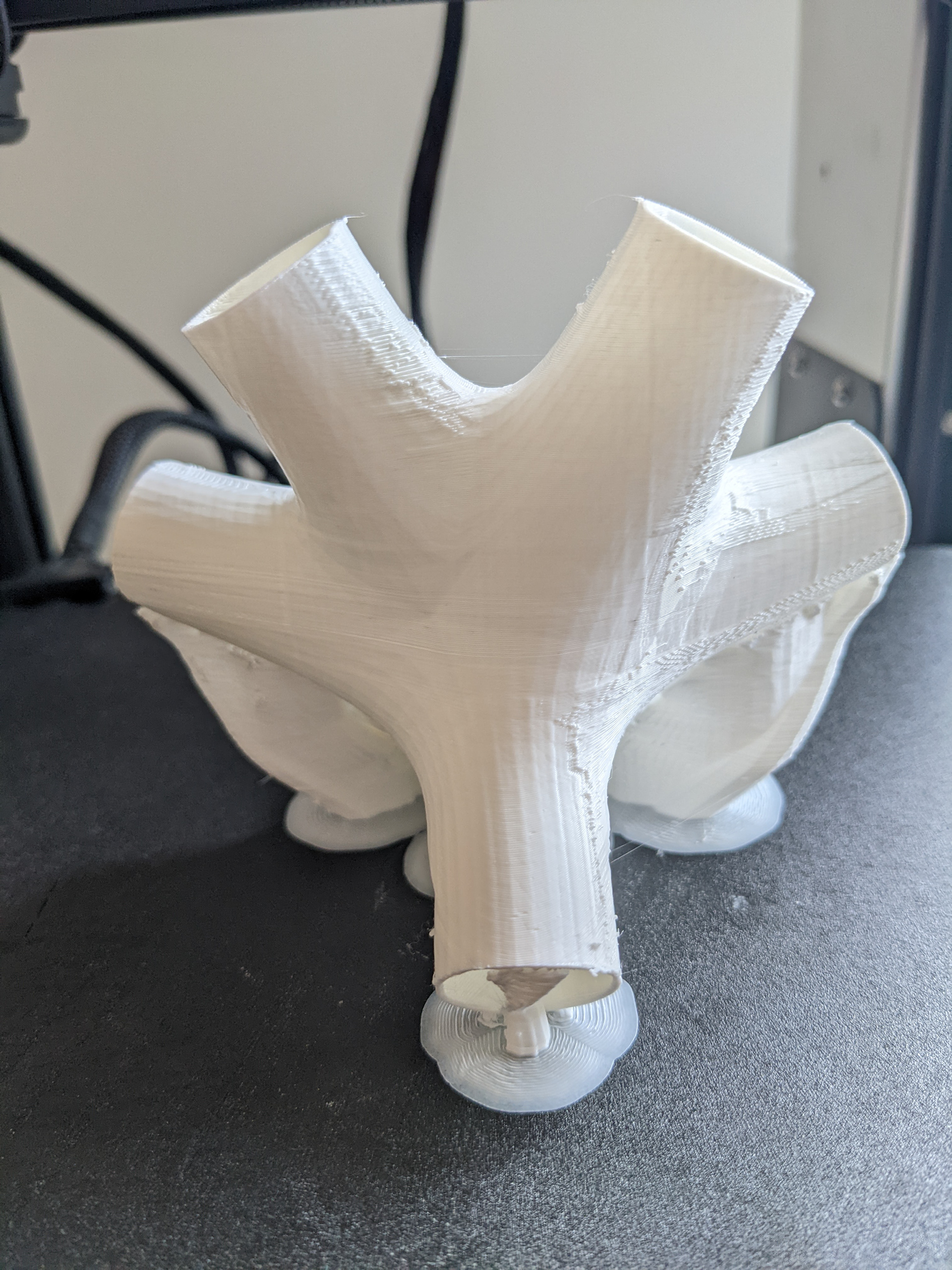
Blender_
Blender has been utilized to produce the growing structures serving the role of output modules for olfactory stimuli. The artifacts produced by Blender's Geometry Nodes system have been 3D printed using two methods of printing and several materials. The design idea of these artifacts follows the differential edge growth of the original geometry. These specific artifacts originate from a circle with 12 vertices. There are 3 parameters controlling the main shape form, the expression of the detail in the body of the form, and the expression of detail by the end edges of the final shape. For the PLA printing, there was a simplified version of the same parametric patch in order to be in the correct scale and simple enough to be printed with no errors.
Two Ender 3 Pro PLA printers have been utilized for generating a series of growing artifacts [6]. PLA has been chosen as the main fabrication material for the main structural components (see Grasshopper section above) and the growing elements hosted in the central piece. We have chosen PLA over SLA for the more accessible components since the distinctive smell of the cured SLA print would interfere with the generated olfactory stimuli. A series of SLA-printed sculptural pieces have been printed and exhibited individually. Those pieces have been carefully chosen from an array of different explorations. An ELEGOO Saturn MSLA 3D Printer has been utilized for the sculptural- non-functional forms. [7]
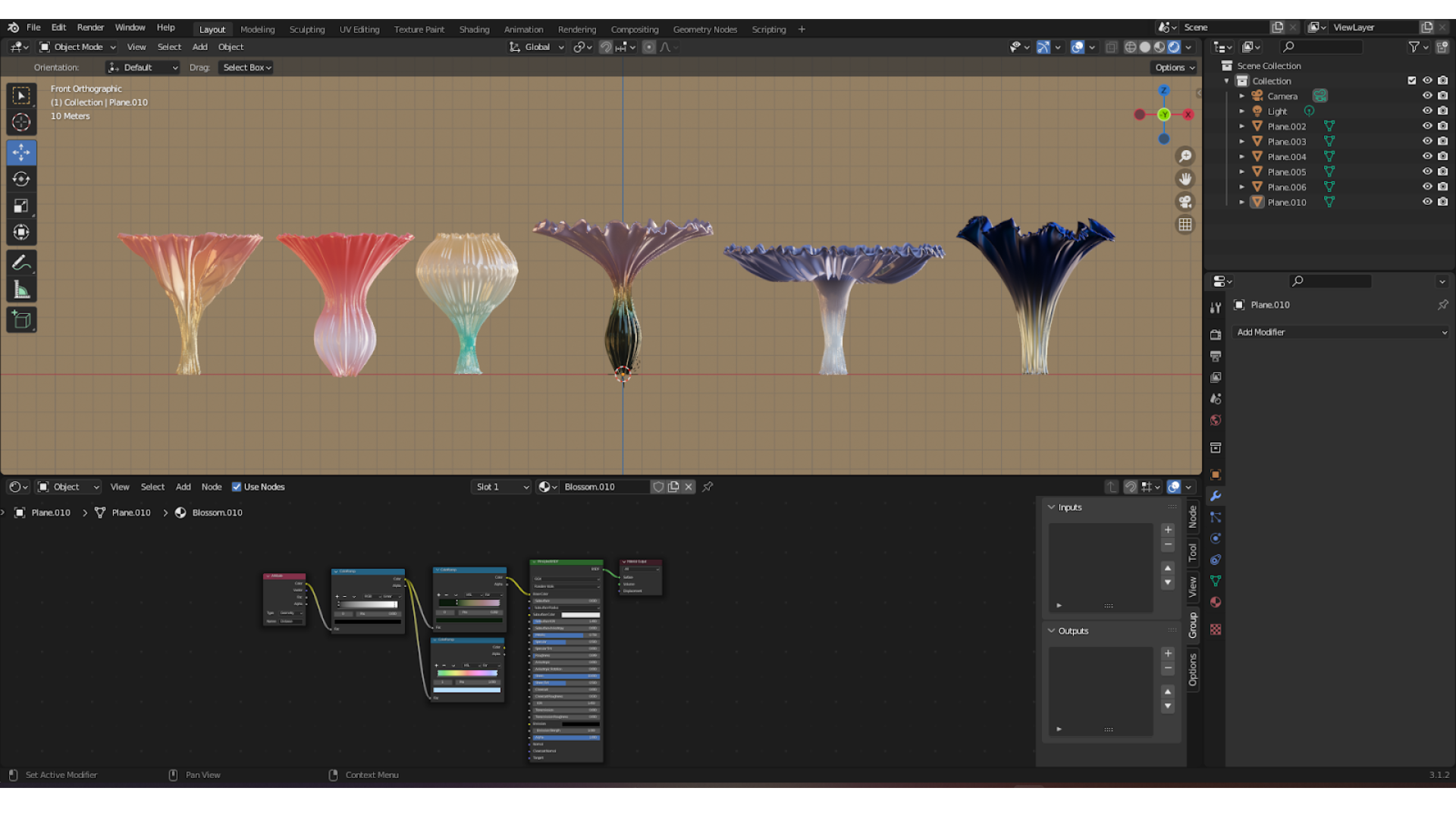

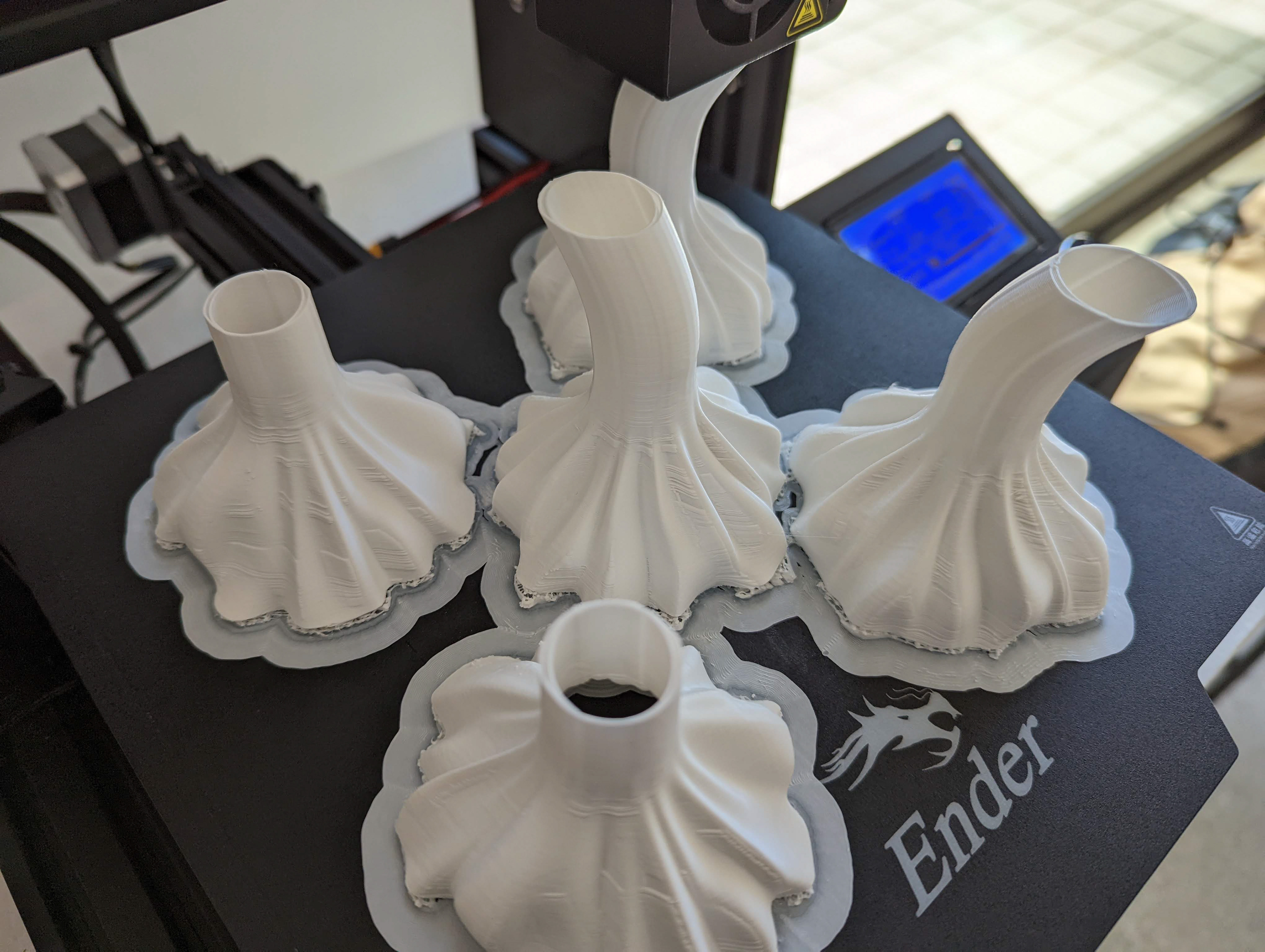
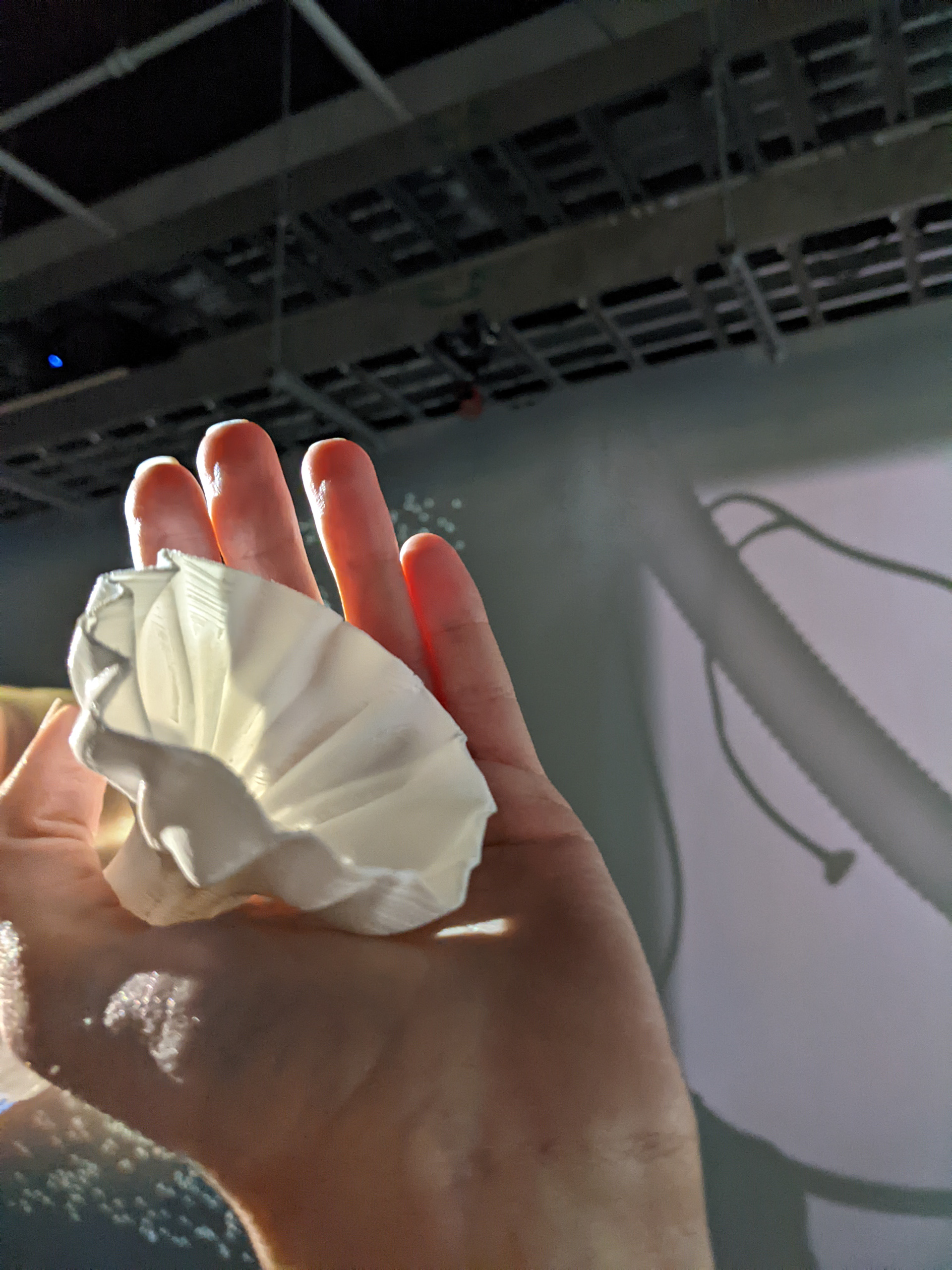
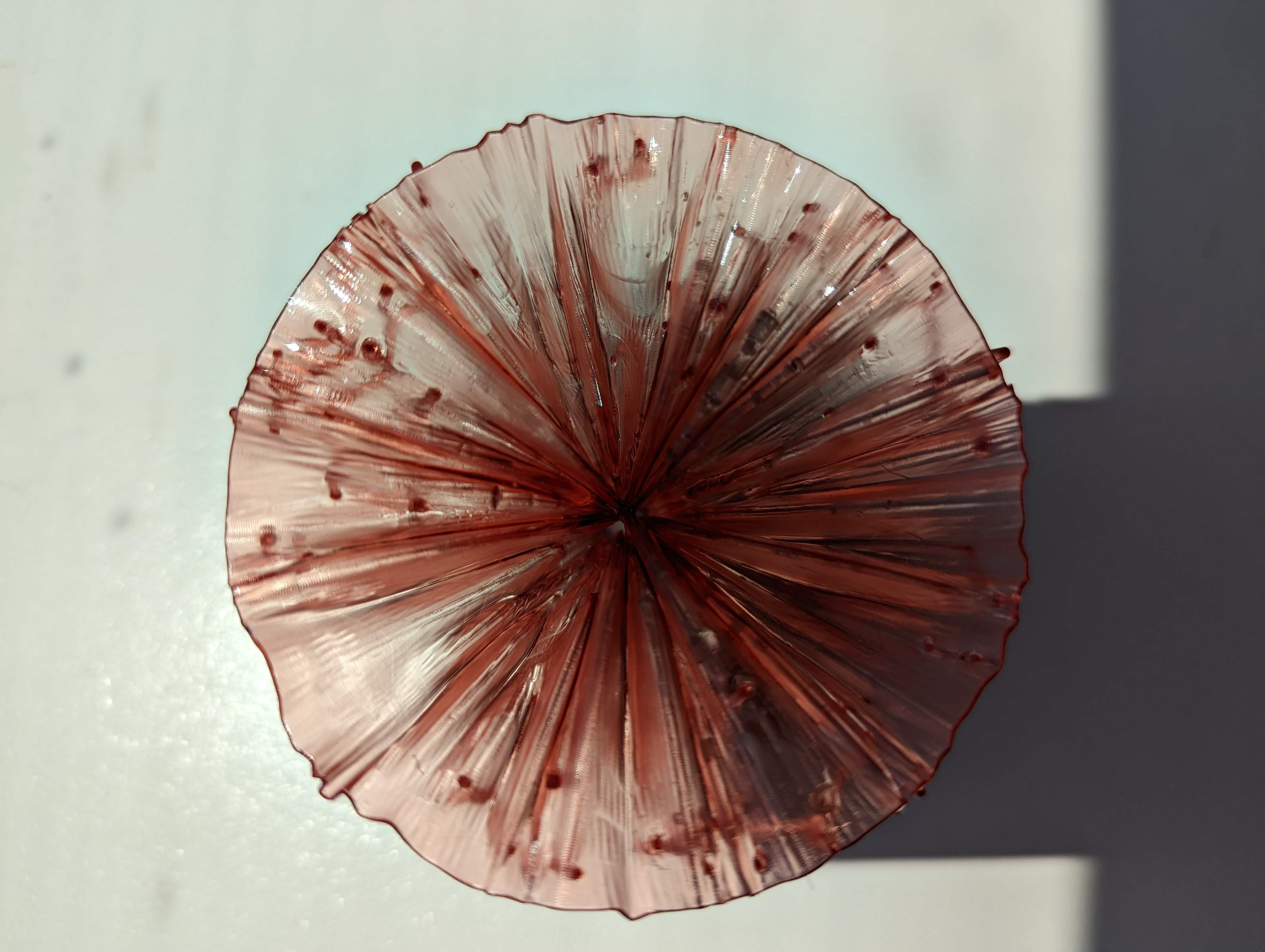
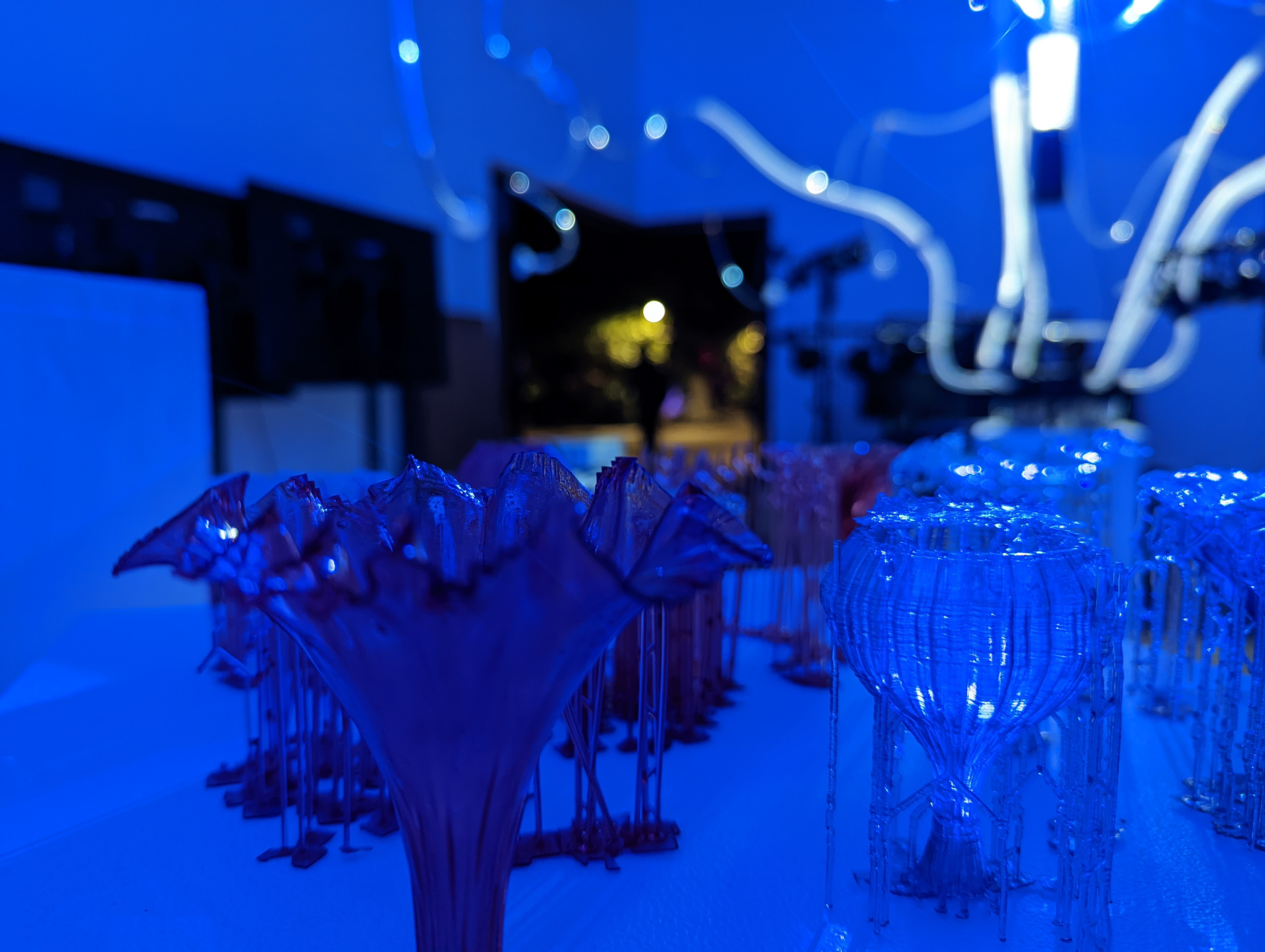
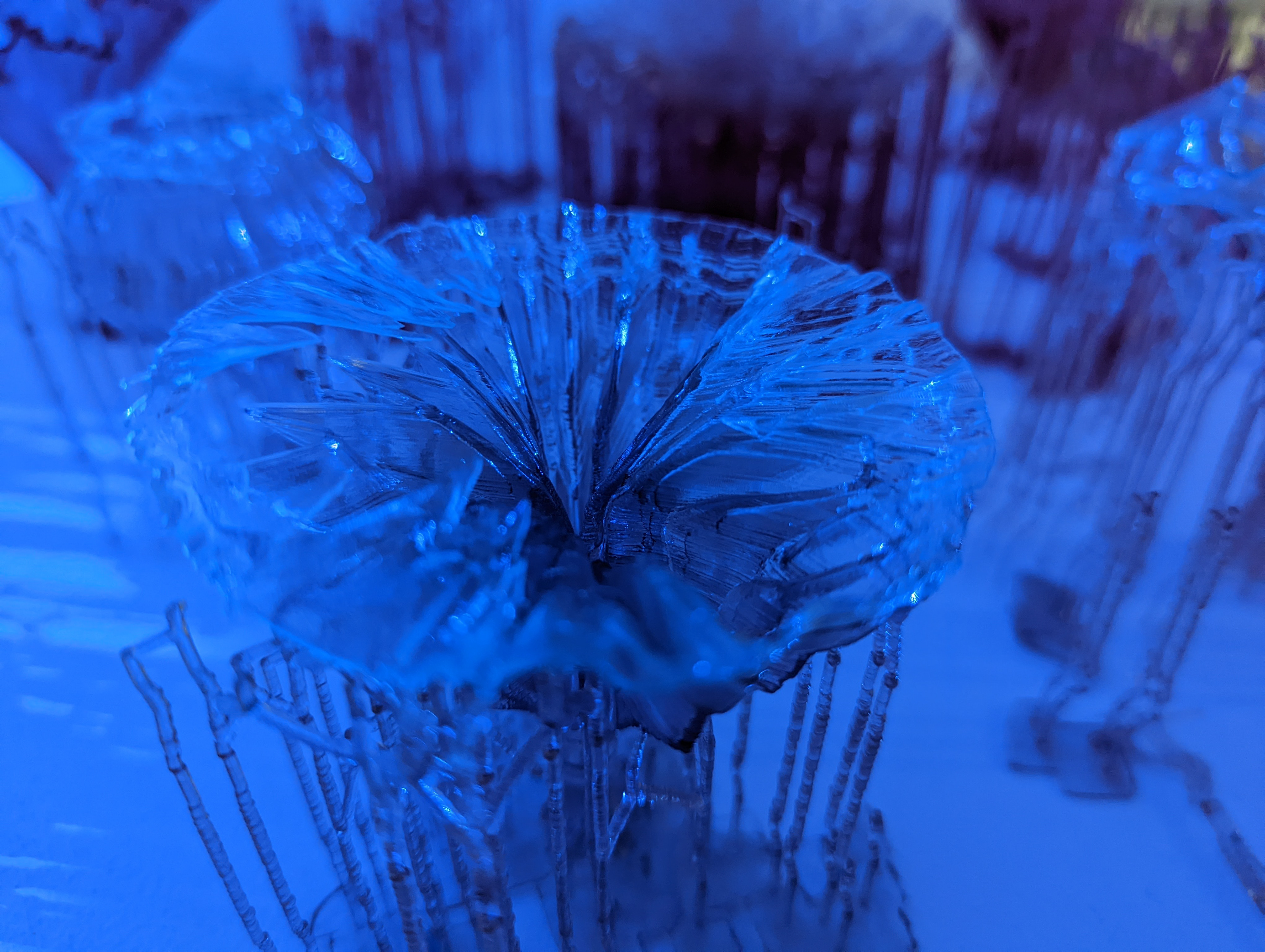
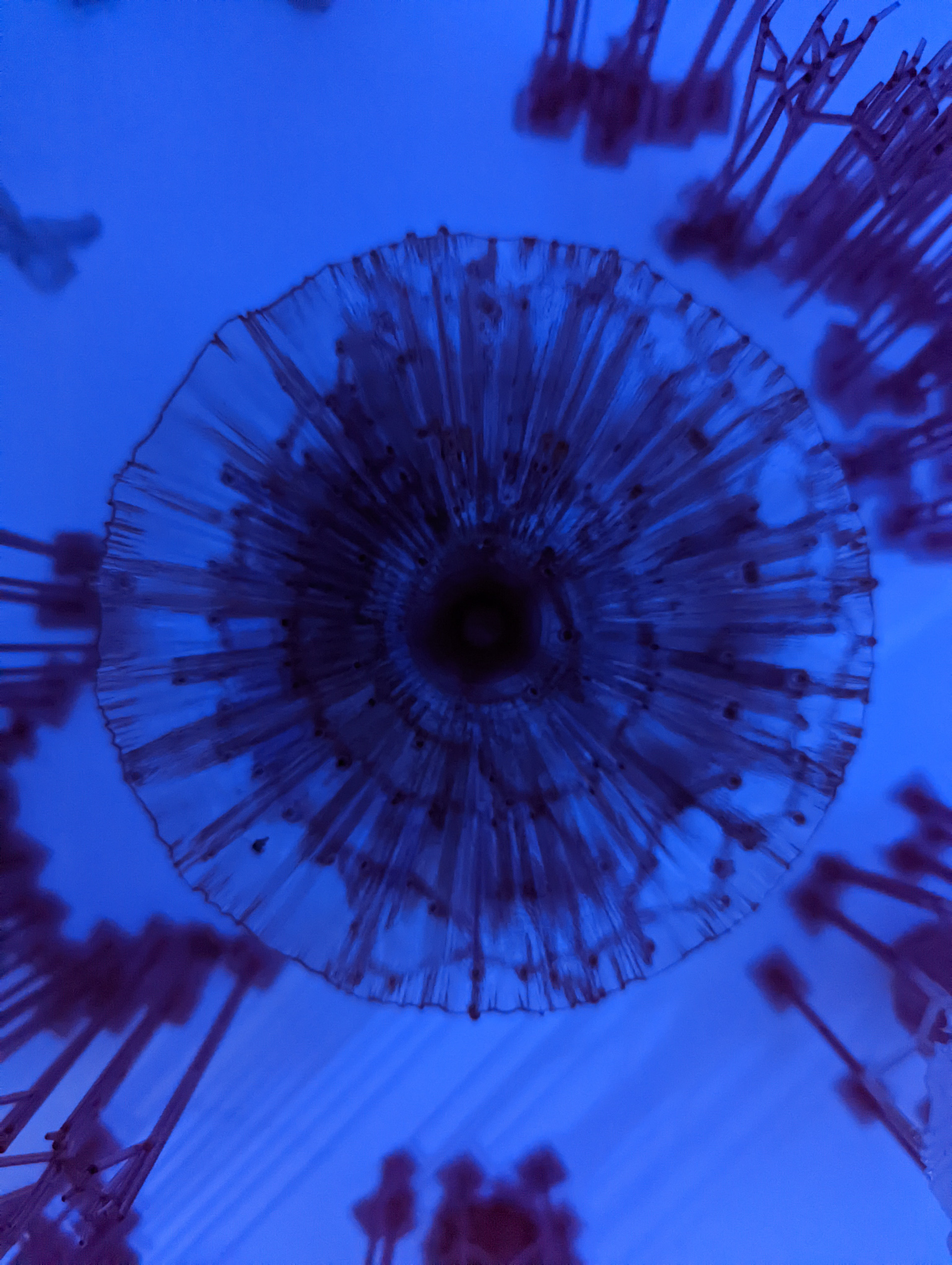
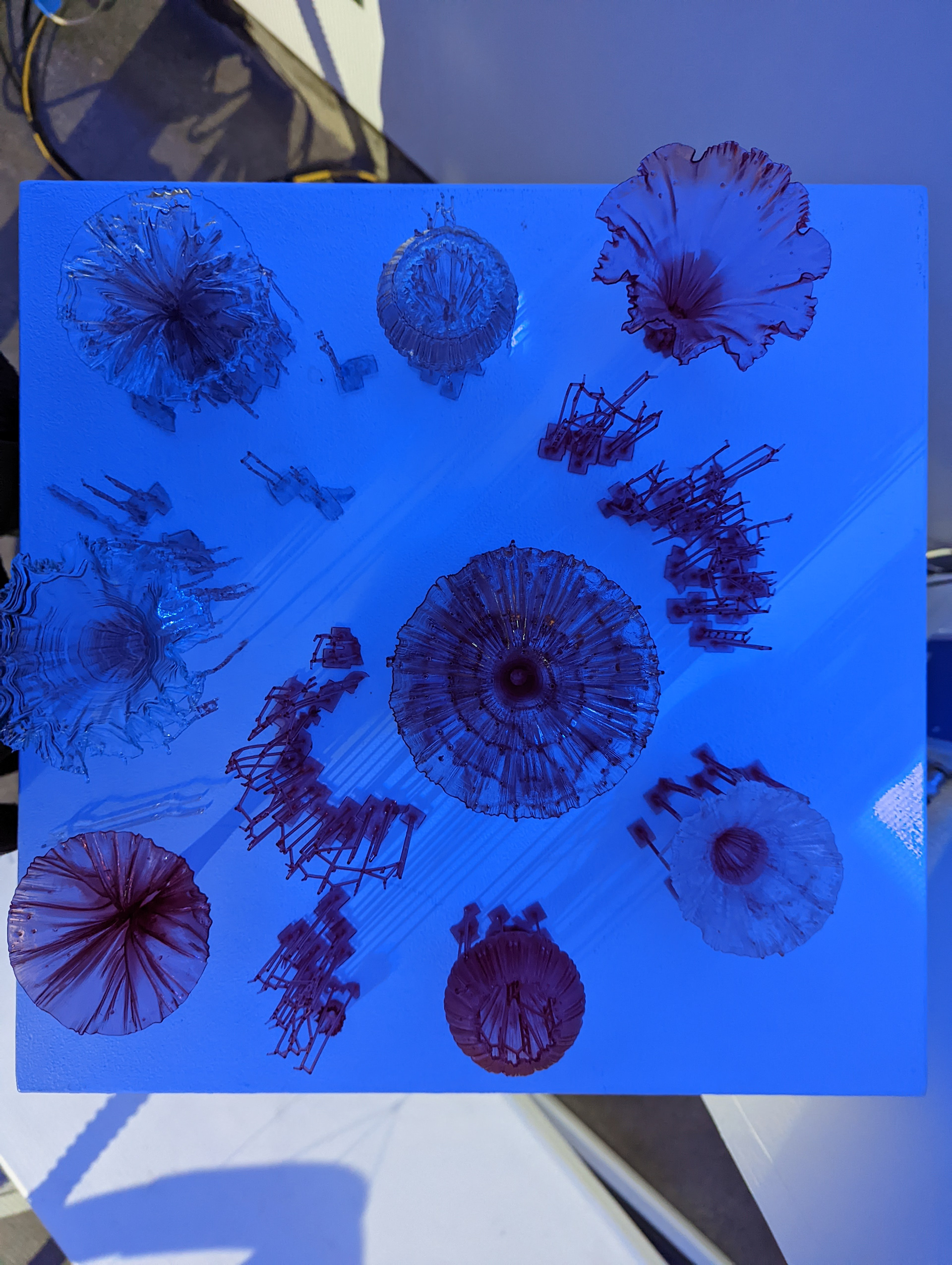
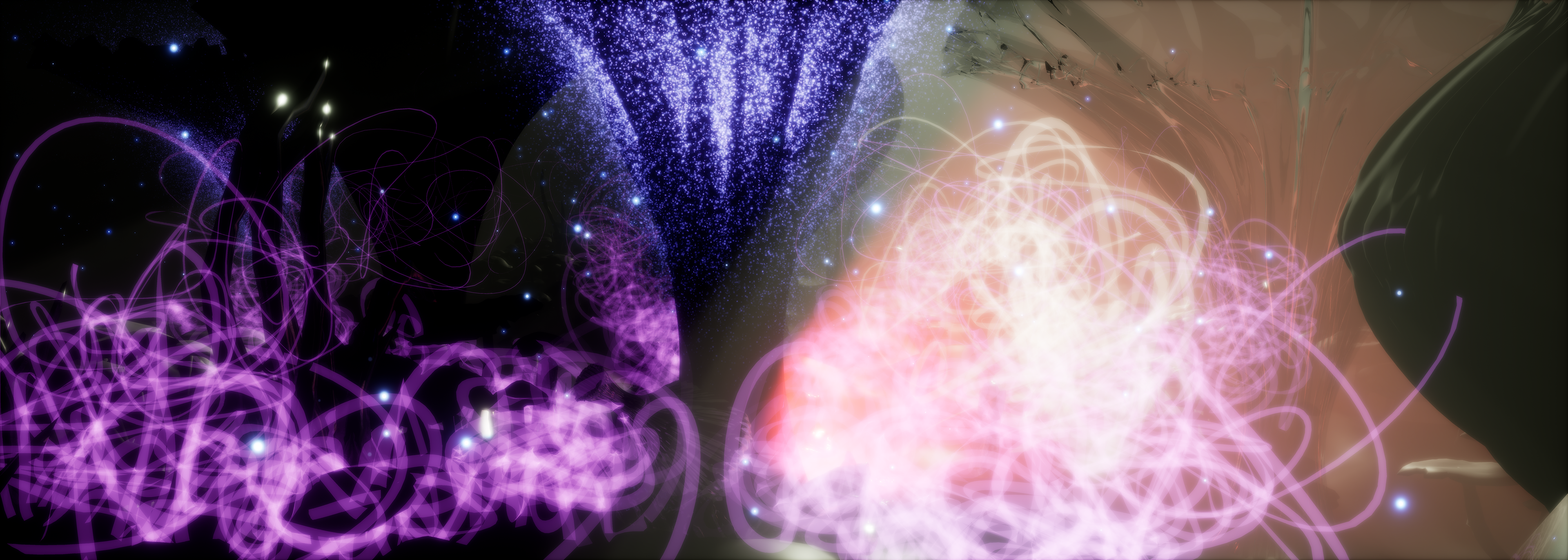
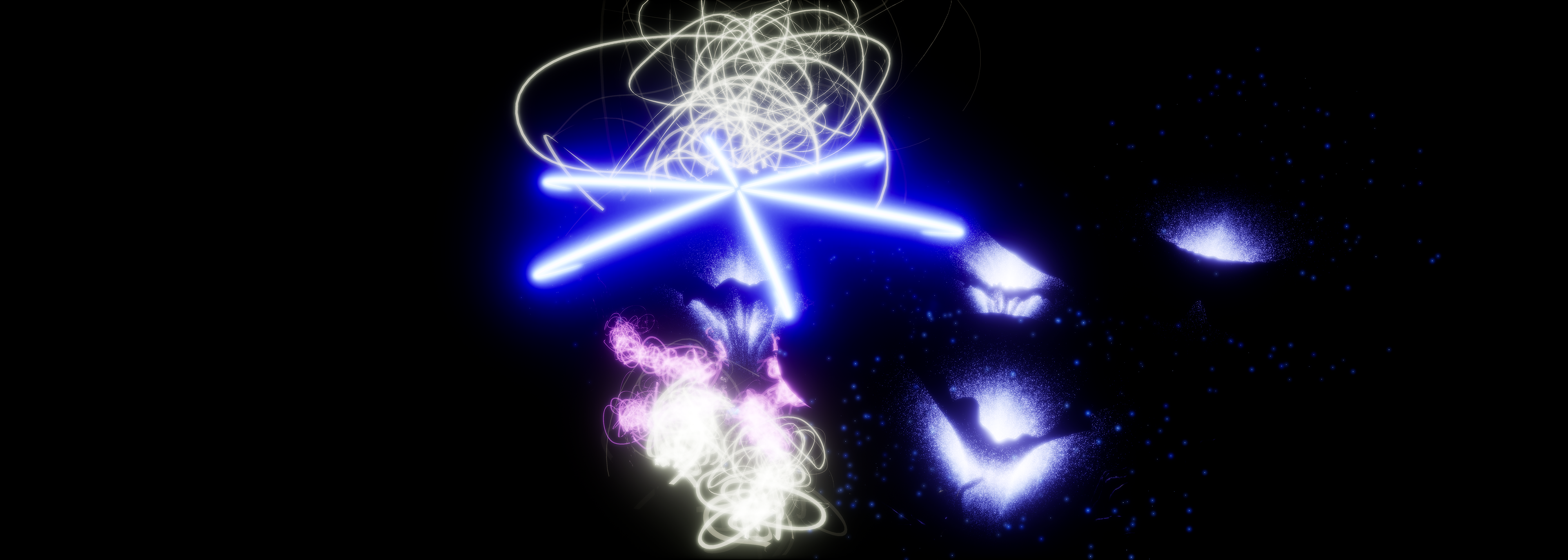
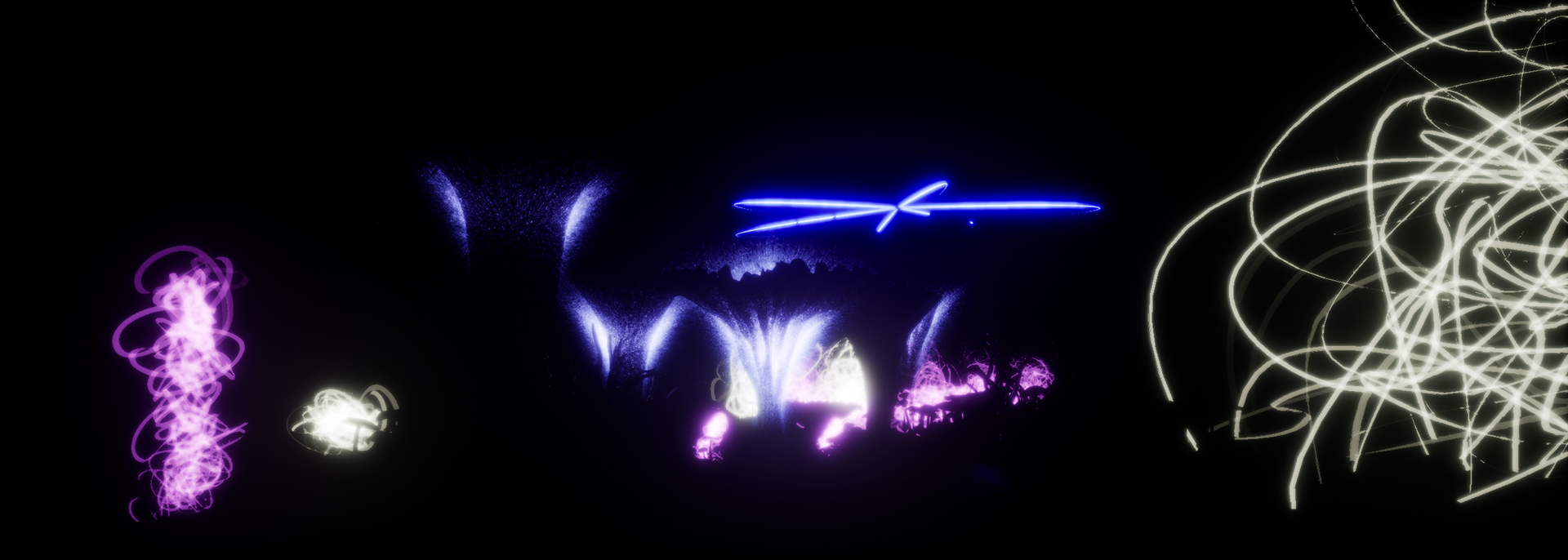
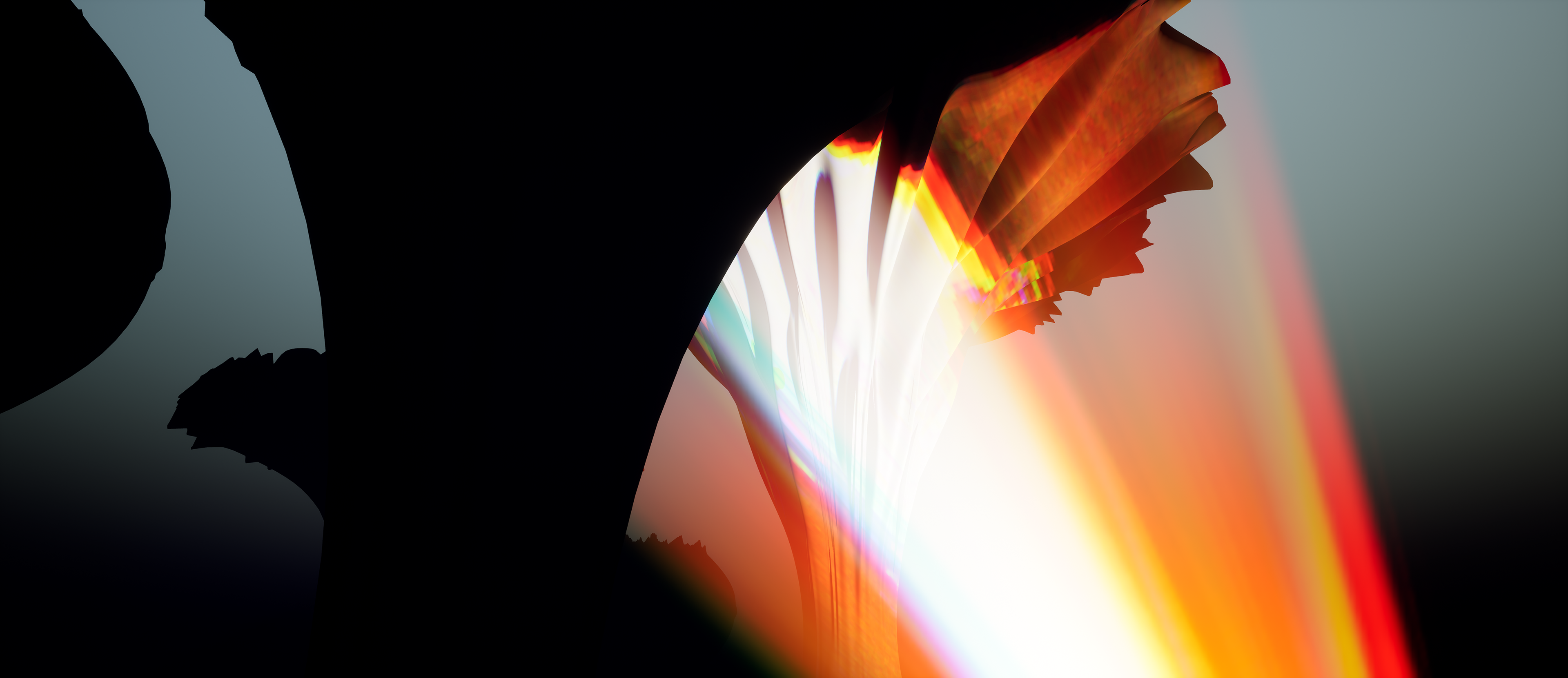
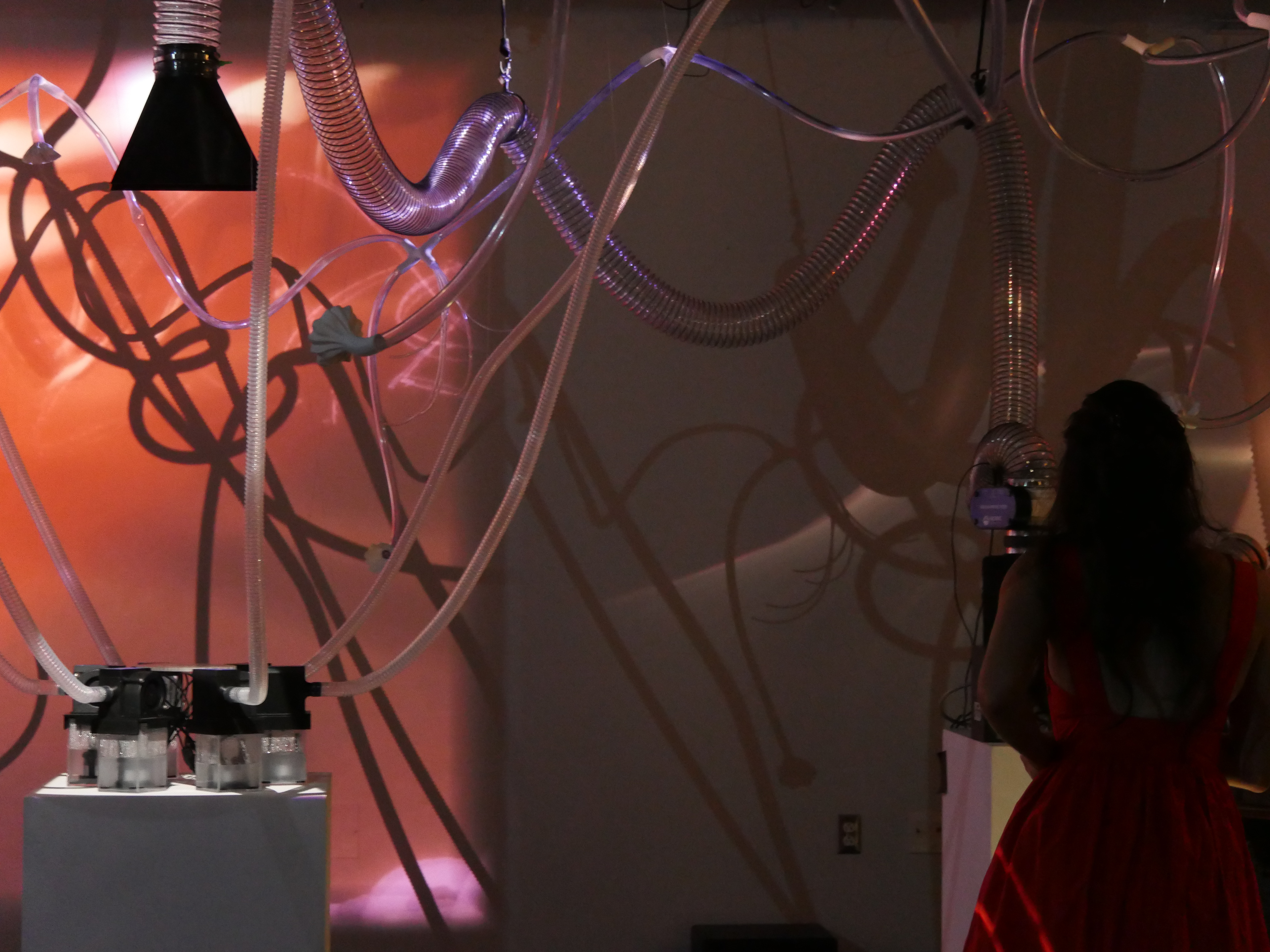
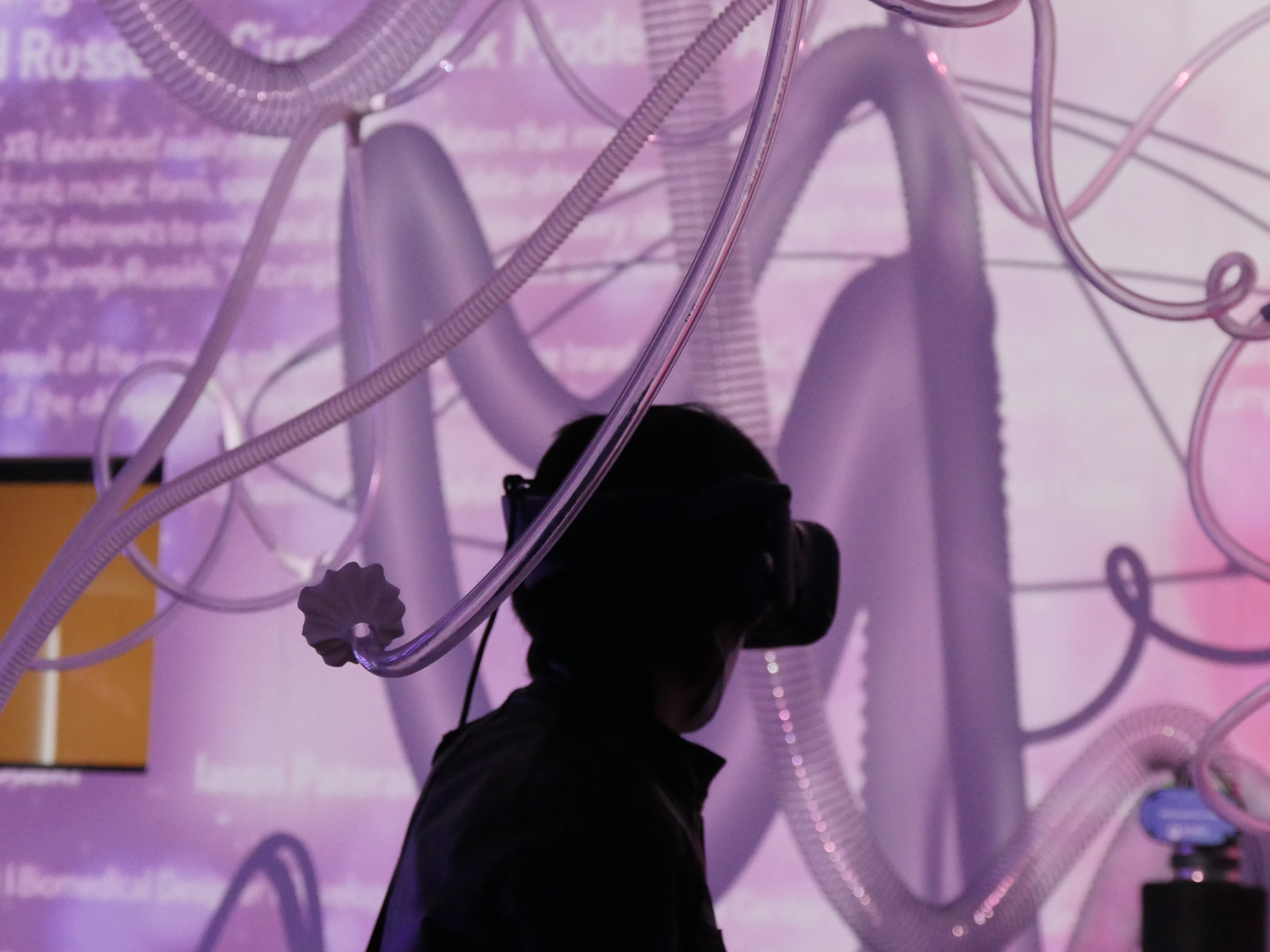
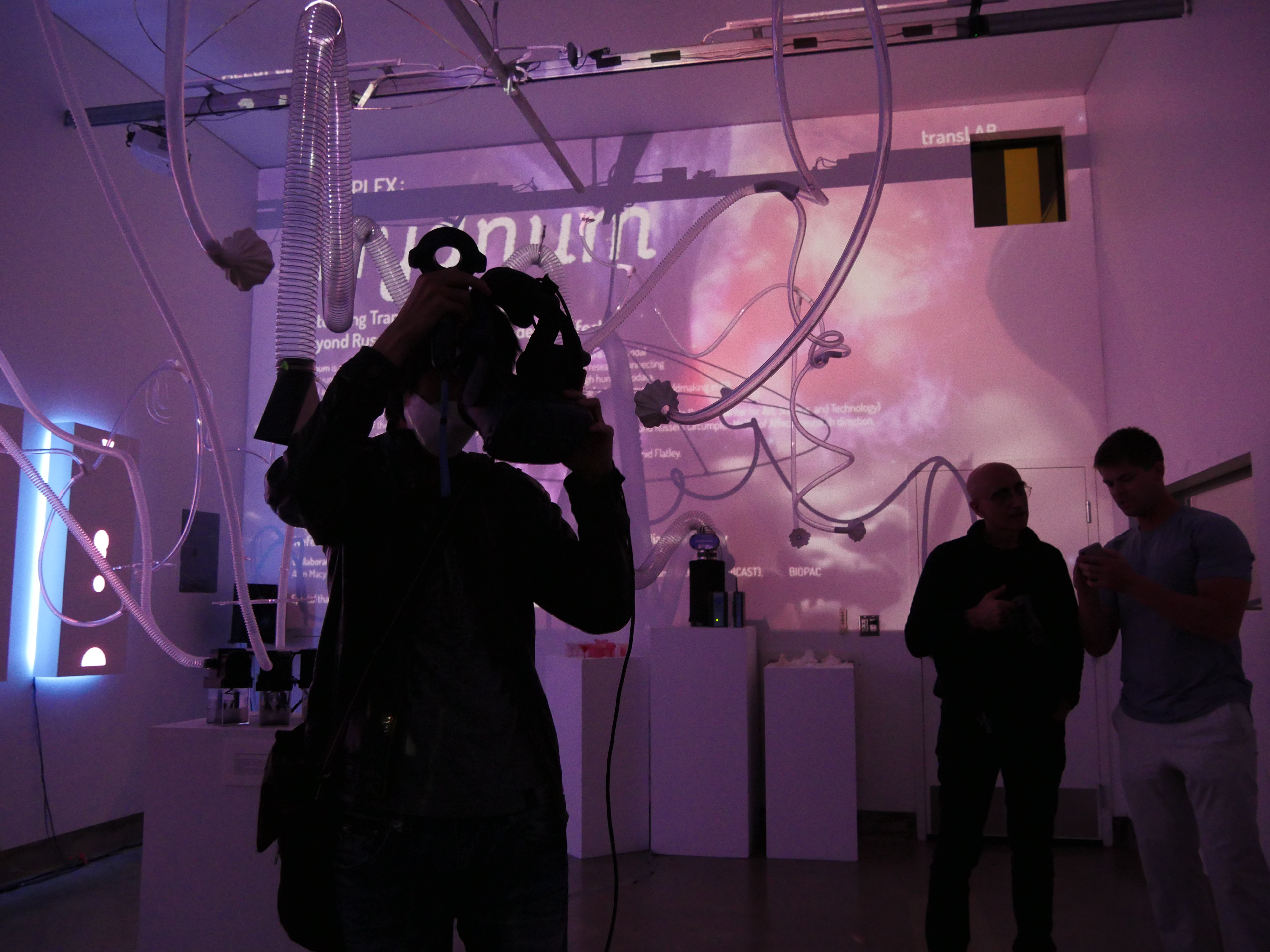
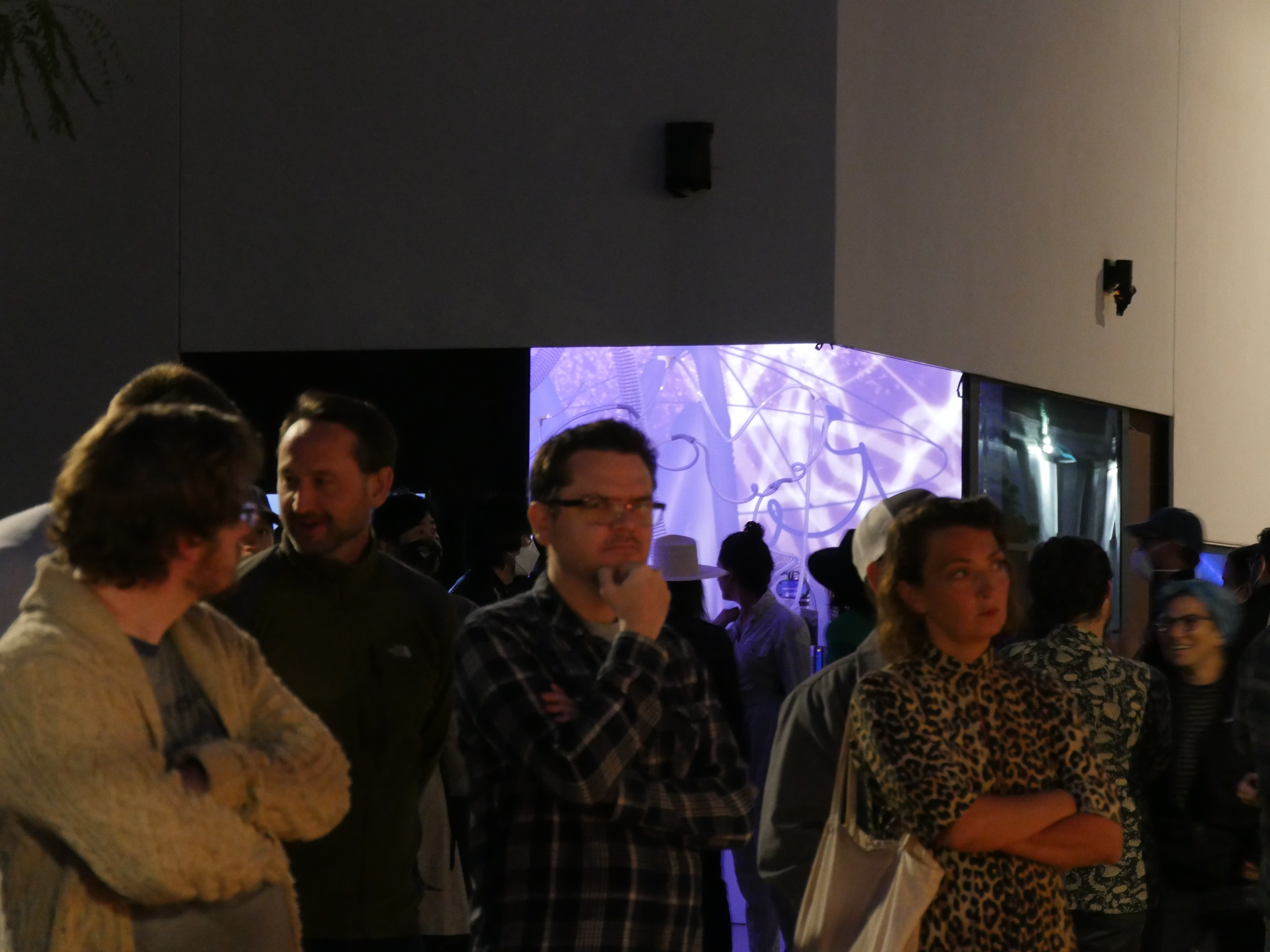
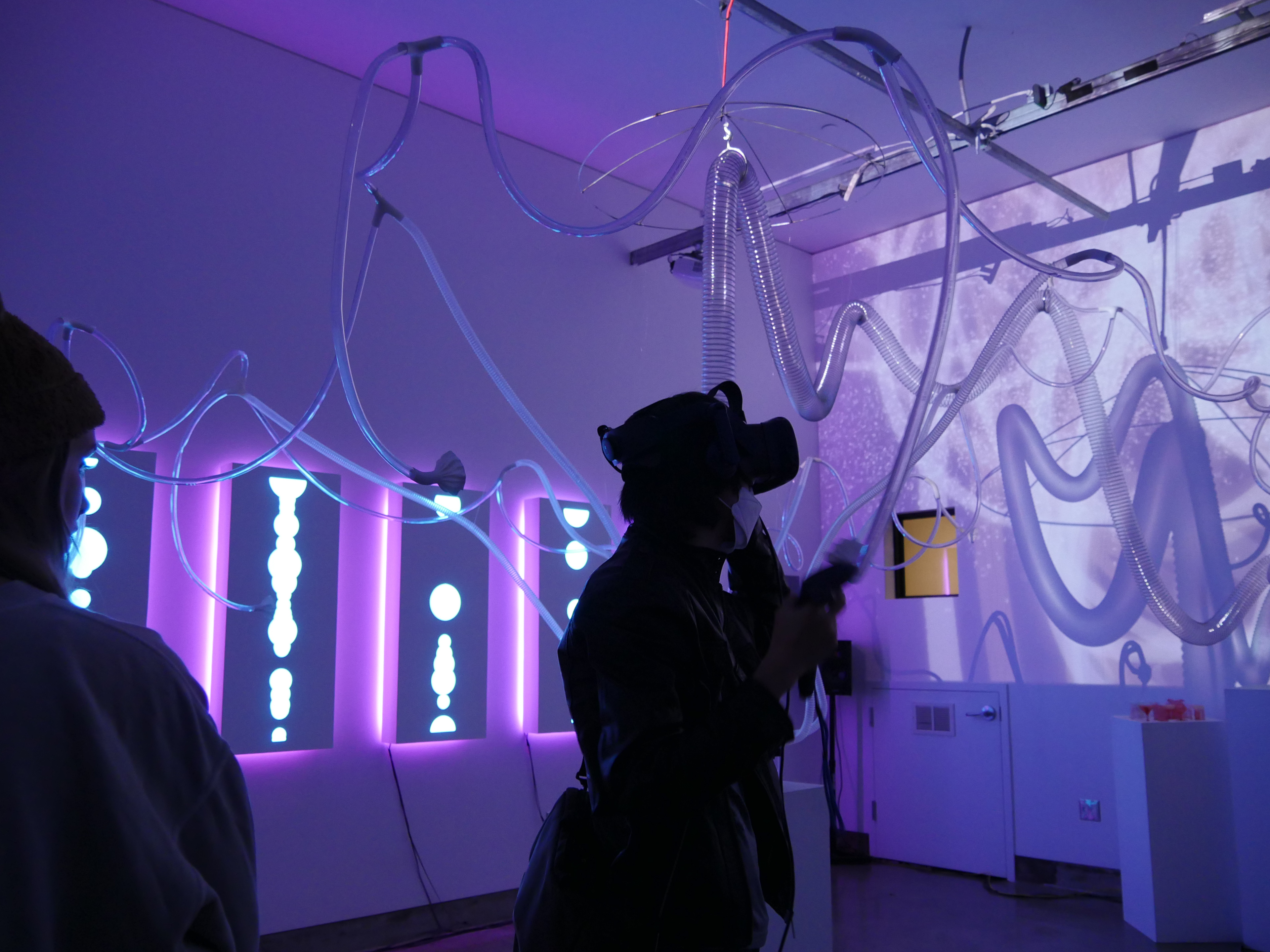
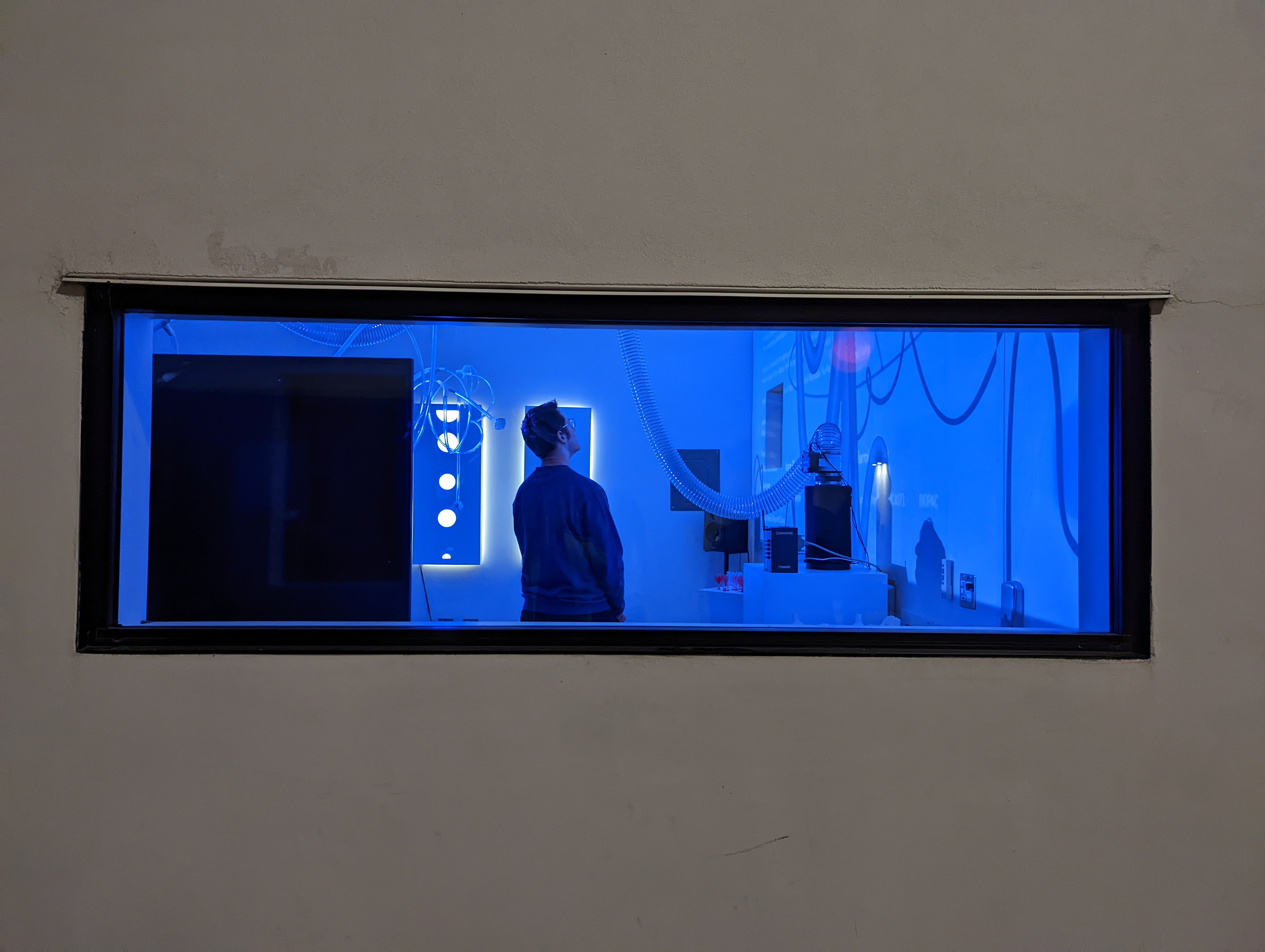
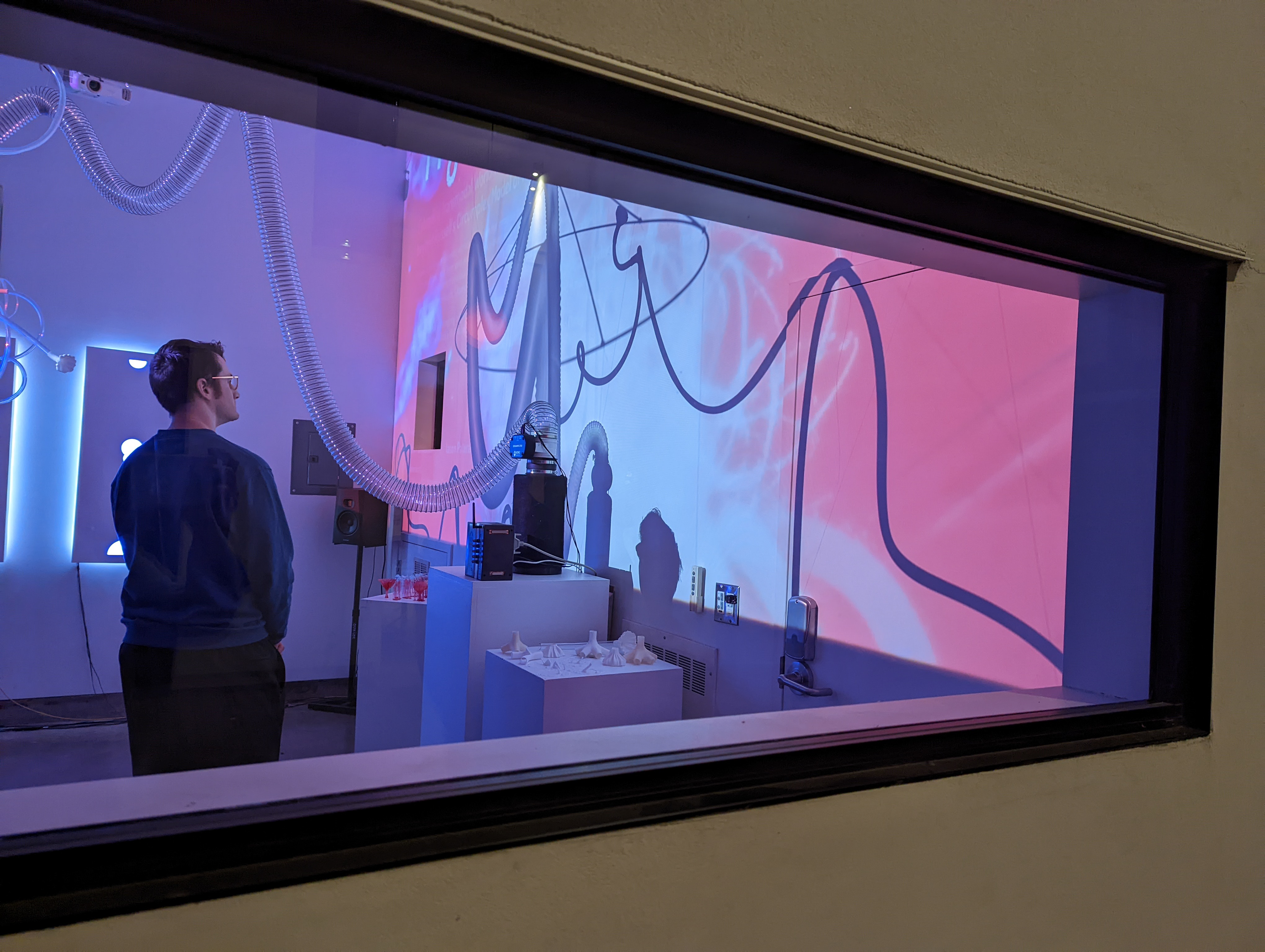
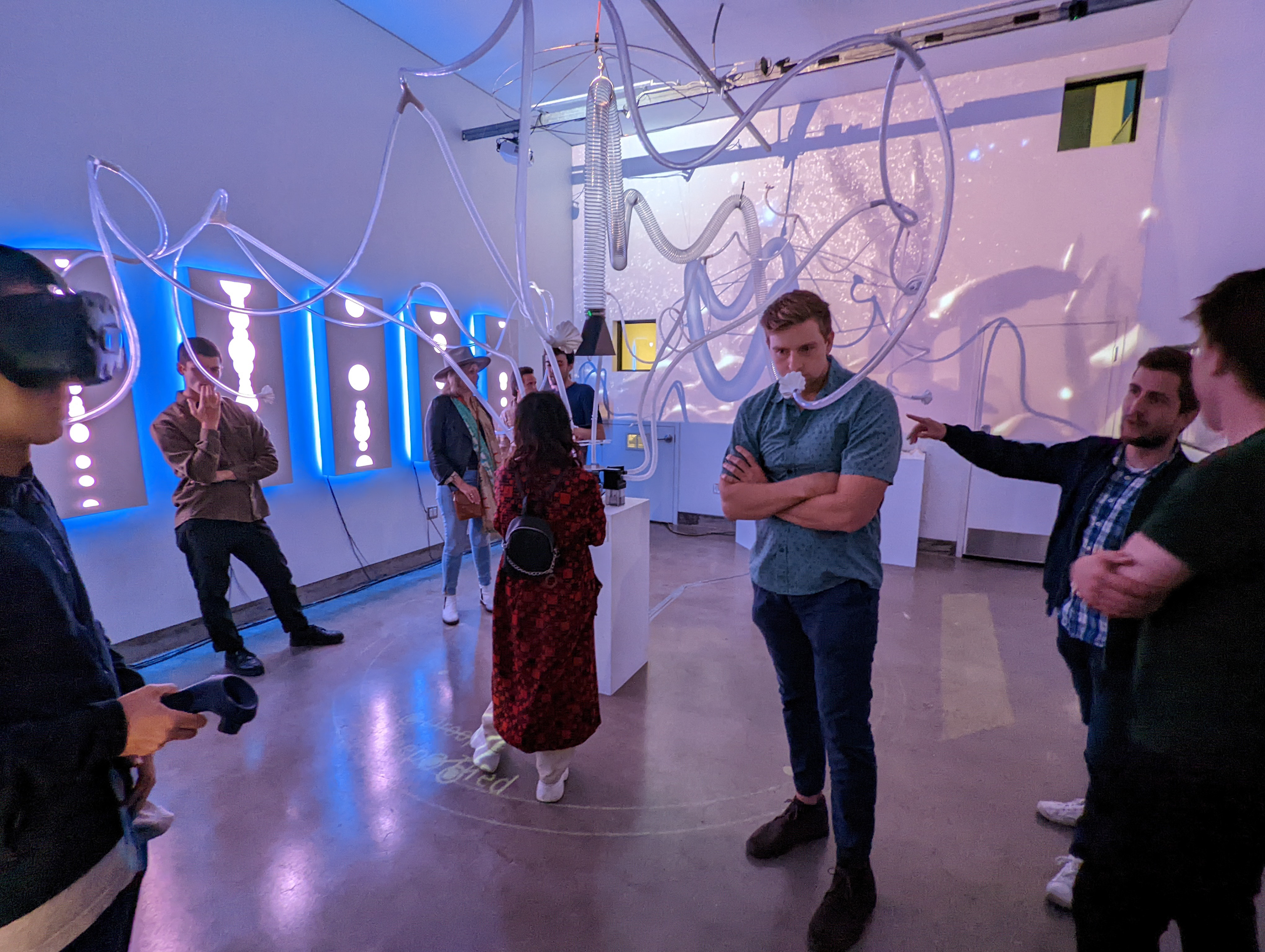
References:
1.Posner, J., Russell, J. A., & Peterson, B. S. (2005). The circumplex model of affect: an integrative approach to affective neuroscience, cognitive development, and psychopathology. Development and psychopathology, 17(3), 715–734. https://doi.org/10.1017/S0954579405050340
5.Deleuze, Gilles; Guattari, Félix (1987) [1980]. A Thousand Plateaus. Translated by Massumi, Brian. University of Minnesota Press. p. 21. ISBN 0-8166-1402-4.
8.Lang et al. (1993). Looking at pictures: Affective, facial, visceral, and behavioral reactions.
9. Liu et al. (2020). A network model of affective odor perception.
10. Bartram et al. (2017). Affective color in visualization.

